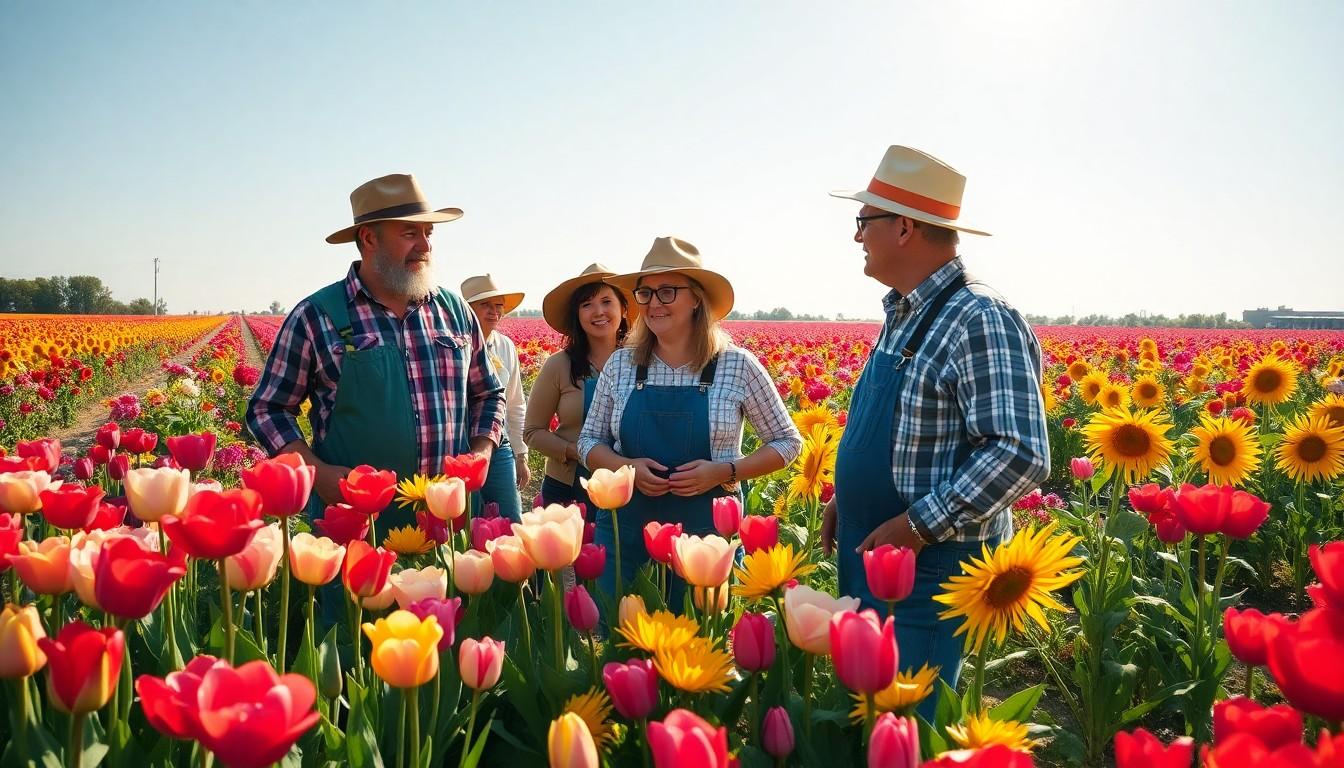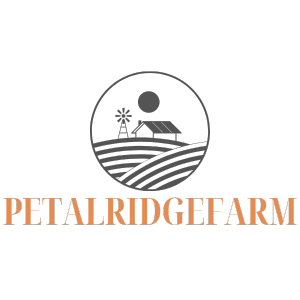Imagine a world where your mornings start with the sweet scent of blooming flowers instead of the blaring alarm clock. Flower farming for profit isn’t just a dream; it’s a blooming business opportunity waiting to be nurtured. With the right seeds and a dash of passion, anyone can turn their backyard into a colorful cash crop that even the bees would envy.
Flower Farming for Profit
Flower farming represents a lucrative business opportunity. Individuals can transform personal spaces into flourishing flower crops.
What Is Flower Farming?
Flower farming involves cultivating flowers for sale and consumption. Growers choose various flower types, such as roses, tulips, and sunflowers, to meet market demands. Seasonal flowers often yield higher profits due to their limited availability. Establishing a flower farm requires good soil quality, appropriate climate, and consistent care. Successful flower farmers focus on sustainable practices, ensuring a balance between profitability and environmental responsibility.
Importance of Flower Farming in Agriculture
Flower farming plays a crucial role in agriculture’s diversity. It contributes to local economies through job creation and increased revenue. Moreover, flowers enhance biodiversity, supporting pollinators such as bees and butterflies. Fresh-cut flowers cultivate a sense of well-being and significantly impact mental health. Additionally, flower farming promotes sustainable land use and encourages tourism in rural areas. By providing aesthetic value, flower farms improve community landscapes and connect people with nature.
Planning Your Flower Farm

Planning a flower farm involves strategic steps to ensure profitability and sustainability. This process includes assessing market demand and selecting the right flower varieties.
Assessing Market Demand
Assessing market demand is crucial for flower farming success. Research local and regional markets to identify which flowers are popular among customers. Analyzing trends helps determine customer preferences and optimal pricing. Engaging with local florists, event planners, and farmers’ markets provides direct insights into what sells well. Additionally, understanding seasonal variations can maximize profits, especially with limited-time flowers. Tracking competitors allows flower farmers to adjust their offerings and maintain a competitive edge.
Selecting the Right Flower Varieties
Selecting the right flower varieties influences the farm’s profitability. Factors such as climate, soil type, and market demand guide this choice. Popular options like roses, tulips, and sunflowers often yield higher returns. Considering local growing conditions and disease resistance ensures strong crop yields. Farmers should prioritize sustainable varieties that require less water and fertilization. Additionally, experimenting with unique or niche varieties can capture the interest of a broader customer base.
Setting Up Your Flower Farm
Setting up a flower farm successfully requires careful consideration and preparation. Attention to detail in each aspect can significantly enhance profitability.
Choosing the Right Location
Selecting an ideal location plays a vital role in flower farming success. Regions with well-drained soil and ample sunlight yield healthier crops. Proximity to markets or florists lowers transportation costs and enhances sales. Access to water sources ensures proper irrigation during dry seasons. Zoning regulations may affect farm layout and operations, so checking local laws is essential. Factors like wind exposure and pest presence influence crop health, making these additional considerations when choosing a site. Assessing these elements prior to planting maximizes the potential for robust growth.
Required Equipment and Supplies
Acquiring essential equipment simplifies the farming process and improves efficiency. Basic tools include hand trowels and pruners for planting and maintaining flowers. Investing in seed trays or pots aids germination and early growth stages. Proper irrigation equipment, such as hoses or drip systems, ensures plants receive adequate moisture. Fertilizers and soil amendments enhance nutrient quality, promoting robust flower development. Protective gear like gloves and masks is necessary for safe handling of plants and chemicals. Finally, compost bins support sustainable practices, turning waste into valuable resources. Collectively, these supplies streamline operations and foster a thriving flower farm.
Cultivation Techniques for Profitability
Cultivating flowers for profit requires effective techniques that enhance crop yields and maintain quality. Successful flower farmers focus on specific strategies that promote growth and sustainability.
Soil Preparation and Fertilization
Soil quality significantly impacts flower health. Testing soil pH and nutrient levels provides crucial information for optimal amendments. Organic matter enriched soil improves drainage and aeration, helping roots thrive. Using beneficial microorganisms supports nutrient absorption, contributing to healthy plants. Additionally, applying fertilizers based on soil tests ensures flowers receive the necessary nutrients throughout their growth stages. Seasonal fertilization tailored to each flower variety maximizes productivity, promoting vibrant blooms.
Pest Control and Disease Management
Implementing pest control is essential for protecting flowers. Monitoring for pests regularly allows farmers to identify issues early. Integrated Pest Management (IPM) techniques help maintain a balance between beneficial insects and harmful ones. Utilizing organic pesticides minimizes chemical use, ensuring environmental safety. Crop rotation and diversity reduce disease incidence, encouraging robust plant growth. Managing watering practices also prevents fungal diseases, promoting healthier crops. Ultimately, consistent vigilance protects profitability and enhances overall flower quality.
Marketing Strategies for Flower Sales
Flower farmers benefit from diverse marketing strategies to maximize sales and profitability.
Direct Sales versus Wholesale
Direct sales offer higher profit margins since farmers sell flowers directly to consumers. Farmers engage with local markets, farms stands, and community events, enhancing customer relationships. Participation in farmers’ markets allows for personal interaction, fostering community trust. Wholesale provides quick sales volumes by supplying florists or grocery stores, although profit margins are lower. Opting for both sales routes helps farmers balance risk and reward. Farmers should assess their operational capacity to determine the ideal mix of direct sales and wholesale options.
Utilizing Online Platforms
Online platforms expand market reach for flower farmers. Social media channels like Instagram and Facebook showcase flower arrangements and farming practices, attracting potential clients. Creating an e-commerce website offers an accessible purchasing option for customers. Platforms like Etsy or local delivery services connect farmers with broader audiences, making it easy to compete in the marketplace. Email marketing can be effective for informing loyal customers about new varieties and promotions. Farmers who invest time in online marketing strategies often experience increased visibility and sales opportunities.
Financial Considerations
Understanding financial aspects is key for successful flower farming. Farmers must evaluate initial investments, ongoing expenses, and strategies for profitability.
Initial Investment and Budgeting
Initial investments often include land preparation, seeds, equipment, and irrigation systems. Farmers should allocate budget resources for soil testing, fertilizers, and pest management products. Tracking these expenditures helps maintain financial clarity. Consideration of ongoing costs, such as labor, utilities, and marketing, ensures all necessary aspects are covered. Creating a detailed budget aids in identifying potential funding sources, like loans or grants. Financial forecasts, based on market research and local demand, provide a roadmap for sustainable growth.
Potential Profits and Pricing Strategies
Profits vary based on flower types and market demand. Seasonal flowers typically command higher prices due to limited availability. Establishing competitive yet profitable pricing depends on thorough market analysis. Farmers should assess pricing strategies, including direct sales, farmers’ markets, and wholesale options. Understanding local buyer preferences enhances pricing effectiveness. Employing promotional offers or loyalty programs increases customer retention and sales volume. By remaining flexible and responsive to market changes, flower farmers optimize profitability while maintaining product quality.
Online Marketing Strategie
Flower farming presents an exciting opportunity for those looking to blend passion with profit. By carefully considering location flower selection and sustainable practices farmers can create a thriving business while enhancing their local communities. The balance of creativity and strategy in marketing and cultivation techniques can significantly impact success.
With dedication and a willingness to adapt to market demands flower farmers can enjoy both financial rewards and the personal fulfillment that comes from nurturing nature. This venture not only contributes to economic growth but also fosters a deeper connection with the environment. Embracing the beauty of flower farming can lead to a vibrant and profitable future.

